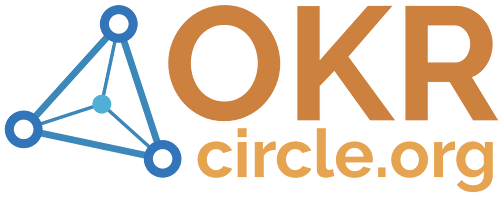Articles

22 Mar, 2020
If I cannot make the goal measurable, I have only formulated a wish. Only the defined results make the goal understandable and tangible. The two components of the OKR can be characterized as follows:Goals are catchy qualitative descriptions of what should be achieved. The goals should be short, inspiring and engaging. One goal should motivate and challenge the team. Key results are a set of metrics that measure progress toward the goal. Each goal should have a set of 2 to 5 key results. If there are too many key figures, the overview is lost and the focus suffers. The key points at OKR are: Shorter time horizon : Agile targets with a shorter time horizon allow the reaction to external influences. It is possible to make adjustments after each cycle. Simplicity : OKR are very simple in structure. In this way, companies invest their resources in achieving their goals and not in setting them. Transparency : The main purpose of OKR is to create an orientation in the organization. For this purpose, OKR are publicly accessible at all company levels. Rhythm : OKR work with different rhythms according to the requirements: Annual focus on large strategic projects Quarterly focus on tactical implementation Weekly review of the current status Motivation : The establishment of the OKR is a mixture of bottom-up and top-down. The teams have a lot of self-determination and therefore greater motivation to work on it. Ambition : The goals are set so ambitiously that they carry you out of the comfort zone without overwhelming you. This is how common growth can arise. No bonus : there is no connection to financial incentives. This is the only way to create a sustainable basis for growth.

11 Feb, 2020
Leading indicators bring the organization into the future because they allow statements about the coming time. In every business organization, the performance has to be measured. The performance of a business is measured by taking measurements of lagging indicators and leading indicators. Lagging indicators are those measurements that focus on the output. It is easy to measure lagging indicators. However, these are hard to improve and influence. Examples of lagging indicators include aspects like customer satisfaction, weight, and a number of deaths. On the other hand, leading indicators are those measurements that are input-oriented. They are hard to measure but can be easily influenced. Examples of leading indicators include user guide usage, calories taken per day and use of safety equipment. Lagging and leading indicators can be used together with the objective and key results (OKR), to determine the outcome of a business organization. Objectives and key results (OKRs) refers to the framework used to define and track objectives and the outcome, over a specific amount of time. OKRs are set and evaluated on a regular basis so as to ensure that the business's goals are met. They can also be used for future references; to determine how well projects were executed. The OKRs of a business organization go hand in hand with lagging and leading indicators. When determining the general performance of your business organization, it is true that you will consider both lagging and leading indicators. However, if you are to ensure the success of your business and secure its future, then it would be best for you to consider more of the leading indicators than the lagging indicators. This article provides detailed information on the benefits of leading indicators over lagging indicators. Leading Versus Lagging Indicators Lagging indicators look into the past. They indicate past performance and focus on how a business performed in the past. Since lagging indicators are only records of what has already happened, they cannot influence or cause any positive change in the future of the business organization. They are, therefore, not the best measurements to use when handling complex solutions in the business. After all, a company can only act after the fact, not after the outcome has already been revealed. For instance, consider an IT outsourcing company. In its Service Level Agreements (SLA's), the organization may have made several agreements with its customers. One of the agreement terms may have involved the company's resolution to be solving any high priority incidents within 36 hours. Therefore, the main objective/goal of the IT outsourcing company would be to always be compliant with the service level agreements (SLA's), in other words, always solve cases within 36 or less hours. In such a case, the lagging indicator would be; 'the company solved the incident within 36 hours or the company didn't solve the incident within 36 hours.' Measuring this lagging indicator is very easy, all you need to do is look 36 hours back and see if the company solved the incident or not. However, that would only be past performance. Such a record will not in any case influence how the IT outsourcing company performs in the future. After all, the fact that the company either solved the incident within the agreed time, or did not solve the incident, does not mean that in the future incidents will be solved within 36 hours or not. The lagging indicator can only be used for recording purposes. This aspect of lagging indicators is what makes these indicators not the best for determining complex solutions of a business. Unlike lagging indicators, leading indicators can help to predict future behaviors of a business. This enables proactivity in a business, that is, the company can use lagging indicators to determine what activities to undertake, so as to impact the organization positively. Leading indicators are therefore the way to go to get the business boost you will need in the future. For instance, qualified leads are a leading indicator of future sales. Again, take the example mentioned above, of the IT outsourcing company. Taking the same case, where the company's main goal is to solve all incidents within 36 or less hours, measuring the leading indicators would be quite difficult. Leading indicators would be an aspect like 'the amount of time that the employees spent on checking for any filed incidents online.' Measuring this leading indicator would not be easy. This is because most employees would not have a specific timetable for when to check for filed incidents; they would just be checking randomly from time to time. Furthermore, it would even be more complicated to measure the leading factor when more than one employees are involved. However, this leading indicator would influence the future of the IT outsourcing company by enabling proactivity. The leading indicator would so by helping determine the activities that must be taken to achieve their goal of solving incidents with 36 hours or less. For instance, the company could assign several people to be checking for filed incidents, such that one person is not overloaded, which could lead to delays. Another proactive measure that the IT outsourcing company might do is install alarms on computers, which go on wherever an incident is filed. Leading indicators can, therefore, be used as predictive measurements. Due to future orientation, leading indicators are the "right" key results for objective and key results. Most of the time, organizations focus on measuring the results, outputs, and outcomes. They opt for such measurements since they are easy to measure. However, this is a huge mistake that they make. These measurements are lagging indicators. They are important when it comes to determining charting progress. However, lagging indicators are not beneficial whatsoever when it comes to influencing the future of a business. Rather, leading indicators are the best for achieving the right key results for OKRs. This is because they look in the future, unlike lagging indicators that look into the past. As a result, the organization or teams can grow with the OKRs and achieve greater success when using leading indicators. Leading indicators bring the organization into the future because they allow statements about the coming time. These statements include changes that may occur in a business organization or its environments. Knowing such possible changes can help an organization prepare for such changes so as to ensure the future success of the business. For instance, a leading indicator statement may predict a future increase in sales. This statement may move the organization to undertake activities that will favor them, such as making additional sales calls or running additional marketing campaigns. Other statements could predict an increase in the number of accidents that may occur in a factory. Such a statement could guide the factory to include safety training programs for all employees and encourage them to wear hard hats at all times. In other words, leading indicators can help a business grow and make continuous progress without ever progressing backward. This is so since with leading indicators they can predict and plan for future changes. Conclusion This article has outlined three main reasons as to why you should focus on the leading indicators and not on lagging indicators in the context of objective key results. First, leading indicators can help your organization stay focused on the future. Second, due to their predictive nature, leading indicators enable proactivity in an organization, ensuring it's a future success. Lastly, leading indicators can help predict changes in an organization, hence the organization can prepare for such changes in advance. Indeed, leading indicators are simply the way to go to get better results for your objective key results!

29 Jan, 2020
Using a combination of techniques works like a charm and using okr enables the combination of the bottom-up and the top-down approach. The two approaches can be characterized as follows: Top-down In the top-down approach, the management or administration comes up with a mission statement or goals and try to convince the employee from top to bottom (as the name suggests). Here, in a top-down approach, OKR would mean that all objectives are set by a manager, a supervisor or an administrator. Bottom-up In a bottom-up approach, Employees or teams simply develop a mission statement or goals and try to convince other employees and management from the bottom up. The management includes administration that is responsible for the decisions taken within the company. In the case of OKR (Objectives and Key results); it would mean that employees set their objectives and key results based on what they think should get accomplished. OKR stands for Objectives and Key Results which is a methodology to set effective goals in the entire organization and to learn simple strategies to further develop the entire company. Using a combination of techniques works like a charm and using okr enables the combination of the bottom-up and the top-down approach: Why Focusing on just one approach is not convenient? The top-down cascading model takes too much time and doesn't add much value. It usually results in taking time to achieve alignment or progression. About the bottom-up approach; the long-term orientation of the organization's vision and strategy can go down which results in losing the teams' commitment. Employees start to feel that they are responsible for their team goals and are "committed" only if they can set them themselves. This thought in hand has just instantaneous benefits only i.e., the teams stop working with that pace as they reach their goals: The company Environment matters! Your company needs to develop an environment that focuses on agility, that is the team should be able to react quickly to changes in the environment and process new information on-spot. Quick turns and flexibility in decisions is what your company requires! OKRs prove to be helpful here, because the strategy is reconsidered at very short and iterative intervals and passed on to everyone. It is just like taking shorter steps, reaching a goal and then defining the path across. In addition, the teams receive and discover the opportunities that may be closer to the market and customers than the top manager. This way, there are brighter chances of contributing their input bottom-up approach. OKRs are so powerful that they develop the working environment within the team by allowing teams to come up with self-determined and self-organized goals for the coming months. They have the company's goals in mind and identify ways in which they can contribute to the company goals (they have specified) as a team. So the approach is for goal setting that connects the employees with the company's objectives and increases engagement. This principle is also called PULL principle, where teams themselves "pull" their goals and tasks. Usually, you are looking to achieve an effective ratio of both; top-down and bottom-up goals. Hence: At least 50% of your goals should be directly derived from higher organizational Key Results that you support. The other way around: There is a rule of thumb is that around 50% of the OKRs should be defined by the team and the employees working in, a bottom-up approach, meaning that the managers also have a say on what their OKRs are. Most companies classify their paths with some hybrid approaches since it is an ideal deal to strike a balance between the need for managers to drive their teams (top-down), and the need for individuals to own their journeys (bottom-up). What they do is that they focus on both ends; including the managers and the employees: Out of these approaches; bottom-up and top-downthere's no ideal choice available. If you go for a bottom-up approach and the strategic OKRs that are managed by the managers or supervisors, the team will consider walking their paths and goal accomplishment would get easy. However, in a top-down approach, employees will not work at the same great pace as they are not considering the journeys to be their own and might end up with low productivity and goal-achievement ratio. As a result, the bottom-up approach when combined with the top down-approach for goal setting connects people with the company in a strategic pattern. Reasons to focus on OKR with the bottom-up and top-down approach: There are three main reasons to focus on OKR with bottom-up- and on the top-down approach: You are more committed: You (as a team member or a supervisor) get committed to the work you do. Every other person in the team starts making waves like he/she is the sailor and the company simply makes it to the top. You move more and faster: With commitment, the work and productivity force is established. The employees, the managers and subsequently, the company starts moving faster towards their end-goals (mission statement). You use the power of organization: Whatever business you're in, you can't negate the power of organization. Organization is needed every moment as it is the only way to make things happen. With OKRs that are focused on a bottom-up and top-down approach, you put efforts like an organization. From managers to the employees, everybody in the company works to build an organization - the one that outranks its competitors in no time. You are aligned: Last but not least, you and your team get aligned. This is something special about an OKR that it is a mixture of top-down and bottom-up, in which both approaches merge into a homogeneous tone. The pace at which objectives are performed is simply outstanding. This has made OKR as one of the most important leadership tools in times of digital transformation and it has become an essential path to design effective overall goal ecosystems!
CONTACT
LOCATION
Berne, Zurich, Berlin, Madrid


